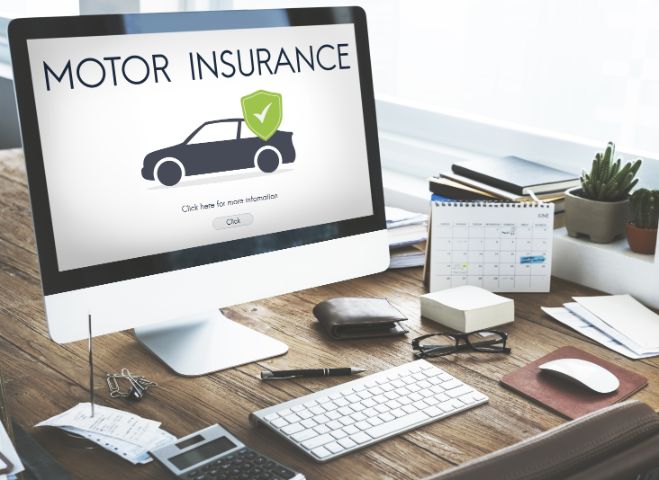IDV in Car Insurance – Important Things to Know
IDV in Car Insurance – Important Things to Know

Getting insurance for your car is one of the most important aspects of car ownership. Whether you own a small economy hatchback or a huge SUV that cost you tens of lakhs of rupees, you should always have adequate car insurance. Getting a vehicle insured is a legal necessity as well as a sane financial decision. With cars becoming more and more costly to buy and complicated to repair, even the smallest accident or calamity can cost you a lot, and if your vehicle gets stolen, things can become worse. Now, what has insurance got to do with the insured declared value of your vehicle or IDV? Read on to know.
The concept of IDV and its calculation process
Generally, when you buy a new car from the market, you are required to get car insurancefor it. A key component of this is the own damage cover. The concept of own damage cover is to protect yourself from financial loss in case of any accidental damage, vehicle theft or damage caused by any natural or manmade calamity. When you get insurance for your car, it is given an Insured Declared Value. This is the notional financial value of your car that you can expect to get in case you go to sell your car in the market. An insurance company uses IDV as the basis on which they will process your claims should the need for making a claim arises.
IDV for a new car is given based on the ex-showroom price of the vehicle.It can be further improved by purchasing add-on covers like return to invoice cover as well.
IDV declines with time
When you buy an insurance policy for your new vehicle, you are given the IDV which is somewhere near the ex-showroom cost of the vehicle. As you keep on renewing your car insurance year on year, the insurance company reduces the IDV of your vehicle. This is done to account for the fact that as the vehicle ages and as you use it, its market value keeps on going down. Consumables like tyres and brakes wear out, and the rubber and plastic parts also experience minor degradation, and so do the metal parts. Consider this as depreciation of the value of your vehicle. Here is the schedule of depreciation:
• Any vehicle that is aged 6 months and below depreciates at 5%
• Any vehicle that is aged 6 months to 1 year depreciates at 15%
• Any vehicle that is aged 1 year to 2 year depreciates at 20%
• Any vehicle that is aged 2 years to 3 years depreciates at 30%
• Any vehicle that is aged 3 years to 4 years depreciates at 40%
• Any vehicle that is aged 4 years to 5 years depreciates at 50%
What happens after 5 years have passed?
The concept of time-based depreciation in IDV lasts for the first years. After this, the IDV will become a matter of choice. Theoretically, the insurance company is to continue with depreciation as per their policies and practices. The only point of compulsion is that at least 50% deprecation that was achieved at the end of the fifth year will stay fixed as a rule. So, insurance companies allow you to choose your own IDV for your car as long as you follow the rule that it cannot exceed 50% of the first IDV of the vehicle.
In fact, if you have a vehicle that is more than 5 years old, you will be well advised to keep its value stable at 50% for as long as you keep the vehicle. The reason is very simple. By the time the fifth year of ownership has passed, you must have invested money in its maintenance and replacement of parts, which can be considered as having a stabilising effect on its market value. For example, maybe you got the tyres changed, battery changed, a few body panels or plastic or glass parts changed or replaced.Which means, you have spent a good deal of money on keeping your car in a roadworthy condition.
Concerns about IDV that is lower or higher than market value
If you keep your car insurance IDV too low, you simply don’t get enough protection. If you need repairs, you won’t have enough scope to claim and may have to take a total loss on an otherwise repairable car. In fact, low IDV can impact the market value of your car.On the other hand, if you keep your IDV too high, you end up paying higher premiums for something not worth the extra cost. Plus, it also makes it harder to get a total loss claim if the need arises. All in all, IDV is the very basic building block of your car insurance policy, so be very careful and read all the terms and conditions of the insurance company before you decide the IDV of your car.
Disclaimer: The above information is for illustrative purpose only. For more details, please refer to policy wordings and prospectus before concluding the sales.
RELATED ARTICLES
Why It is Important to Choose the Correct IDV When Buying Car Insurance
What is IDV and how does it work?
The higher the IDV the better! Or is it?










 Health Insurance
Health Insurance  Travel Insurance
Travel Insurance  Car Insurance
Car Insurance  Cyber Insurance
Cyber Insurance  Critical Illness Insurance
Critical Illness Insurance
 Pet Insurance
Pet Insurance
 Bike/Two Wheeler Insurance
Bike/Two Wheeler Insurance  Home Insurance
Home Insurance  Third Party Vehicle Ins.
Third Party Vehicle Ins.  Tractor Insurance
Tractor Insurance  Goods Carrying Vehicle Ins.
Goods Carrying Vehicle Ins.  Passenger Carrying Vehicle Ins.
Passenger Carrying Vehicle Ins.  Compulsory Personal Accident Insurance
Compulsory Personal Accident Insurance  Travel Insurance
Travel Insurance  Rural
Rural 











